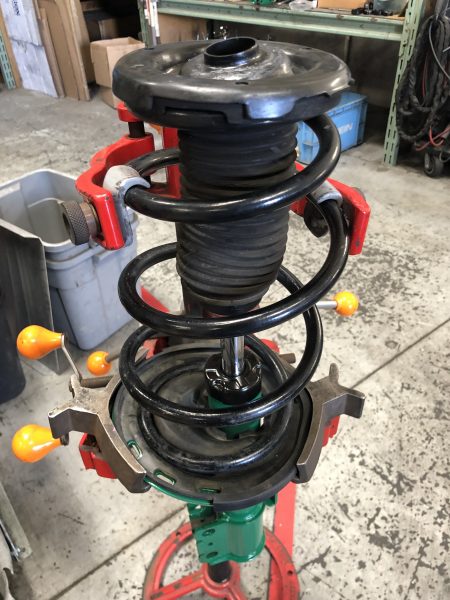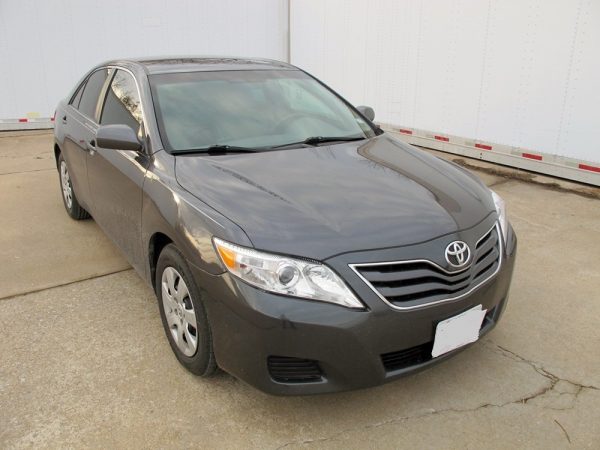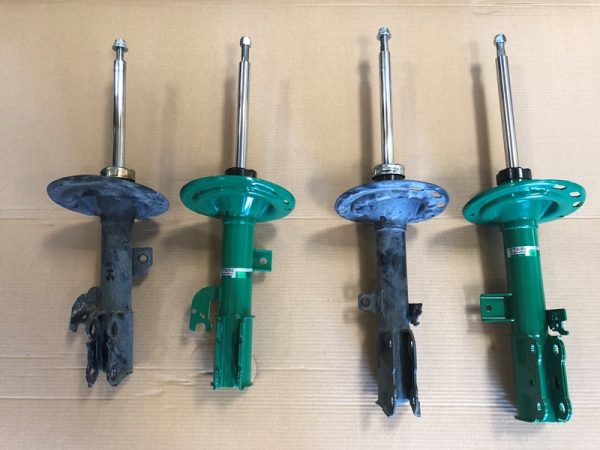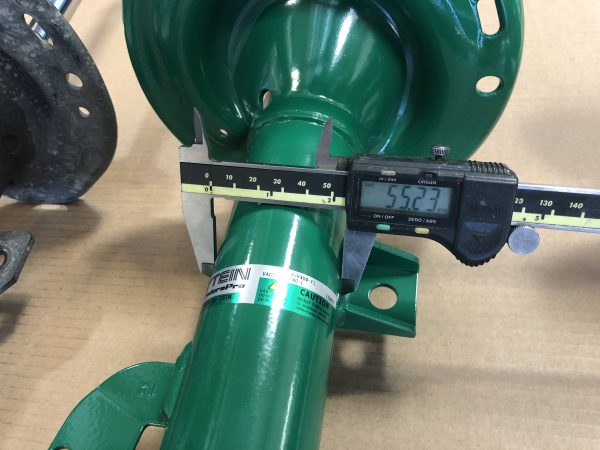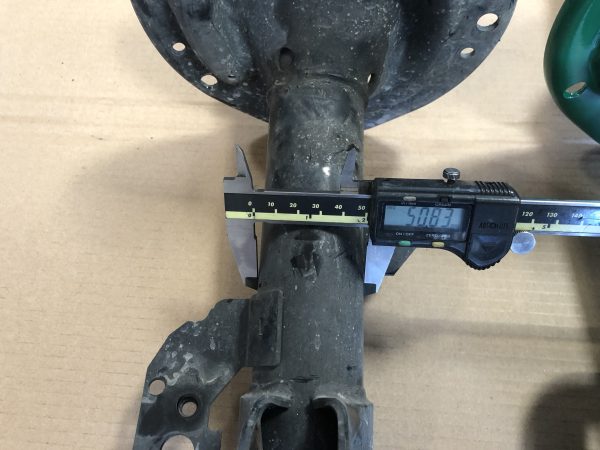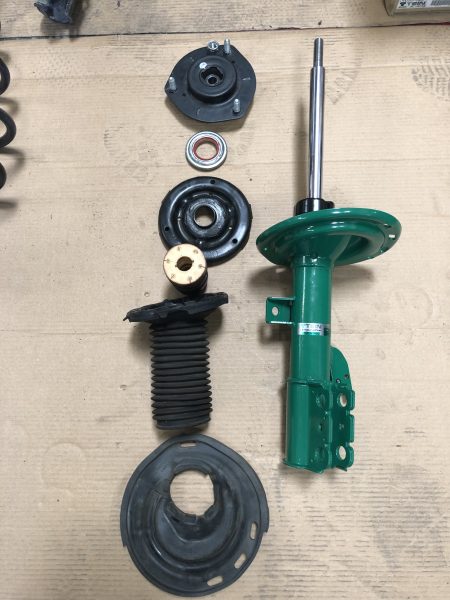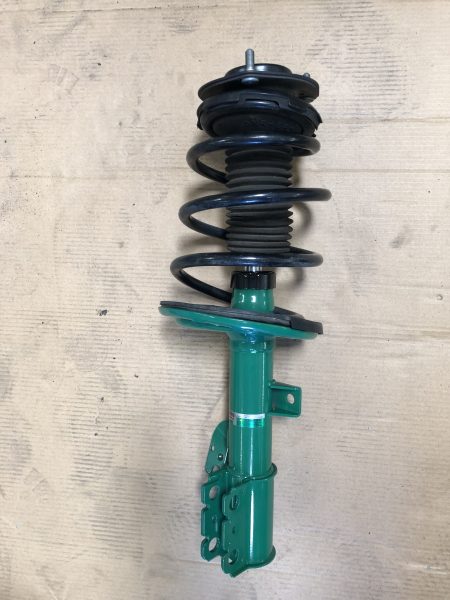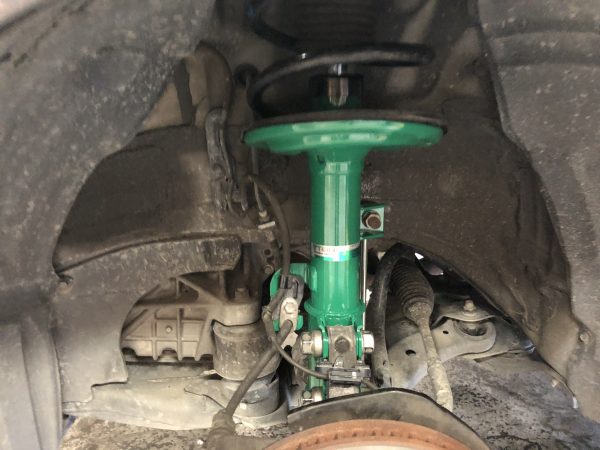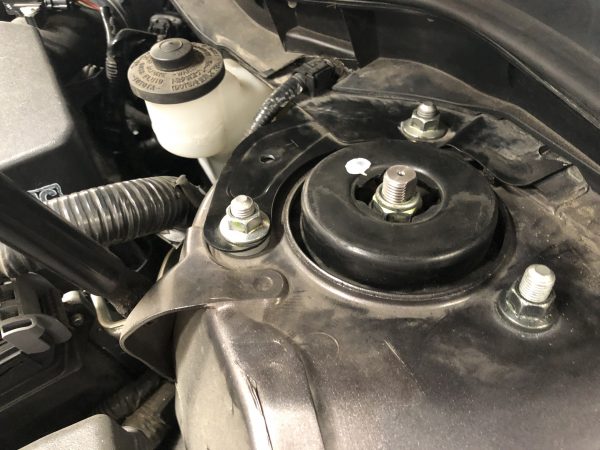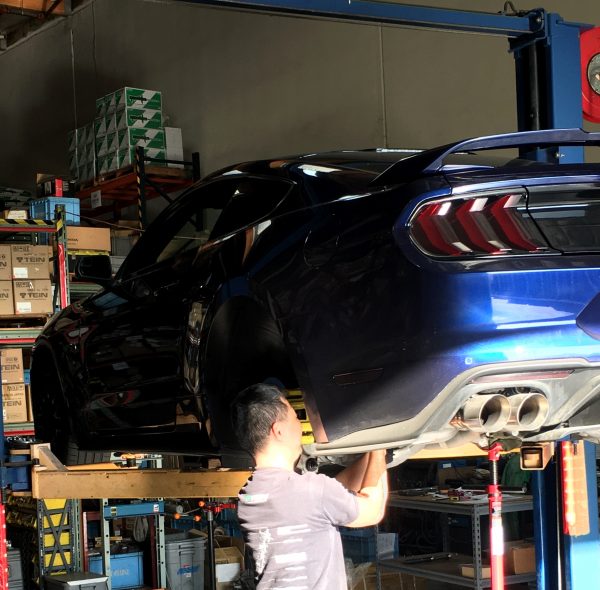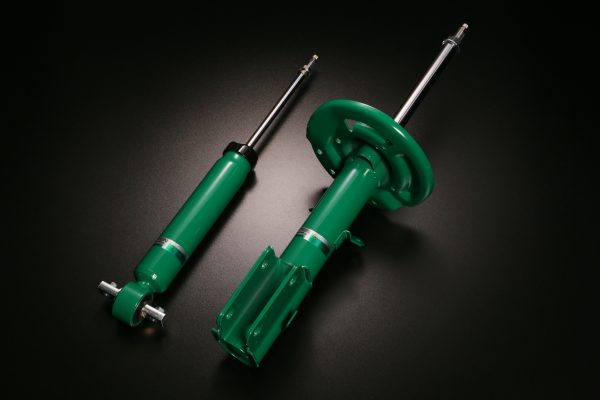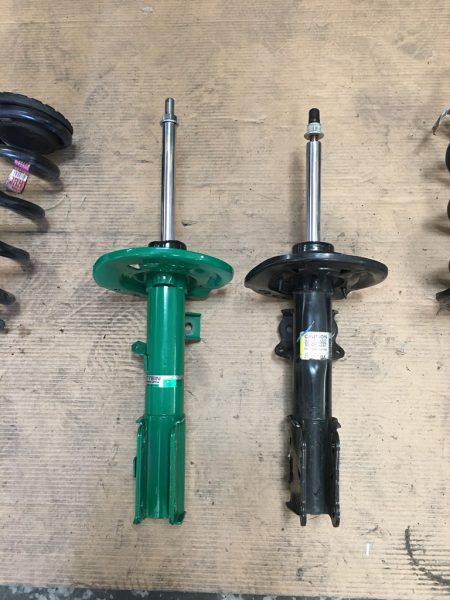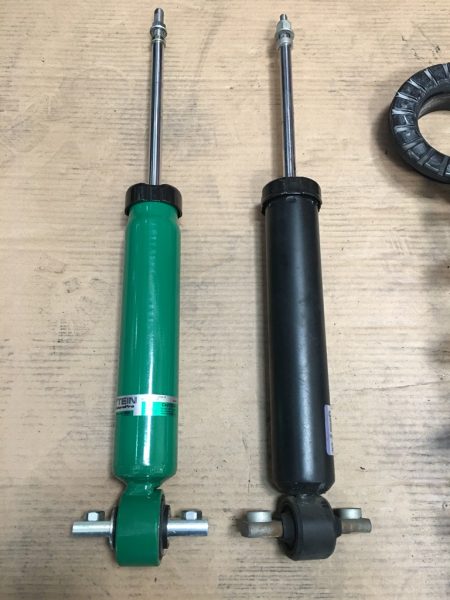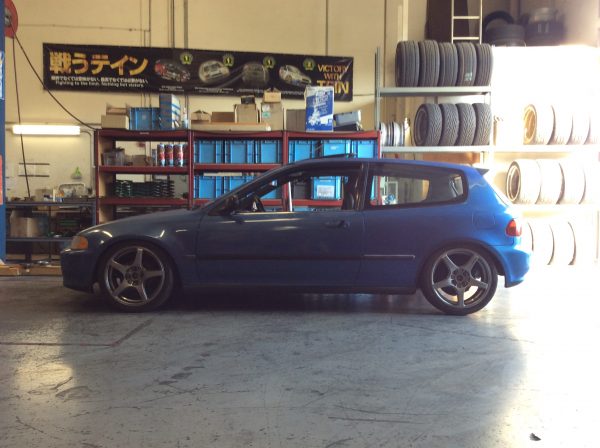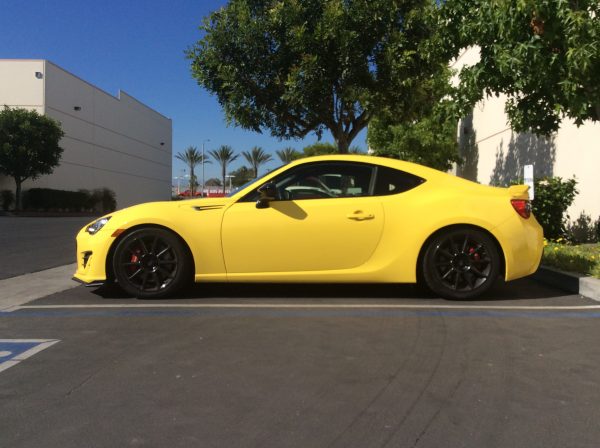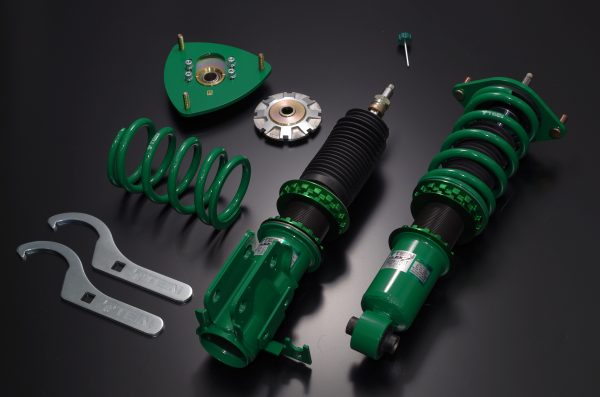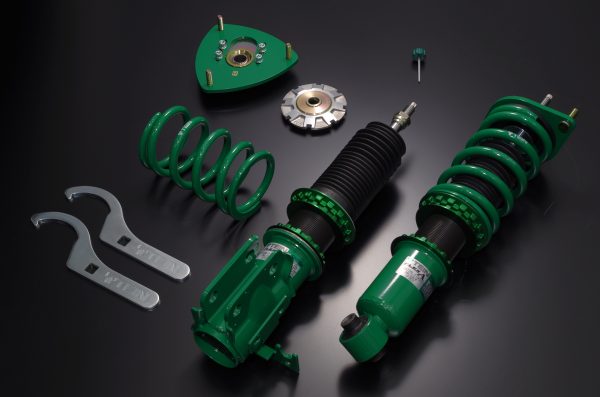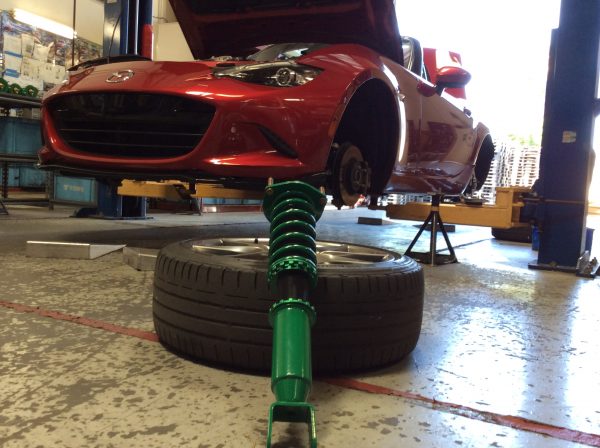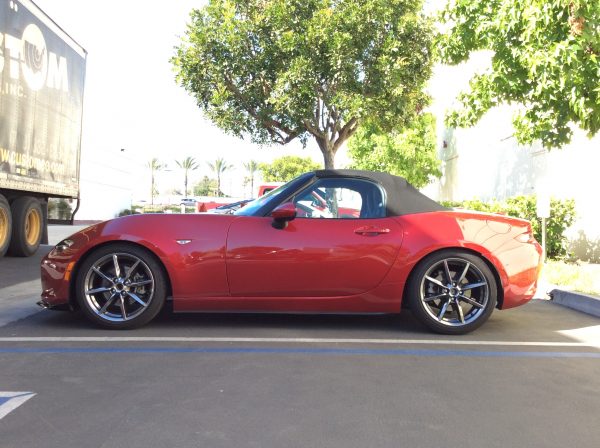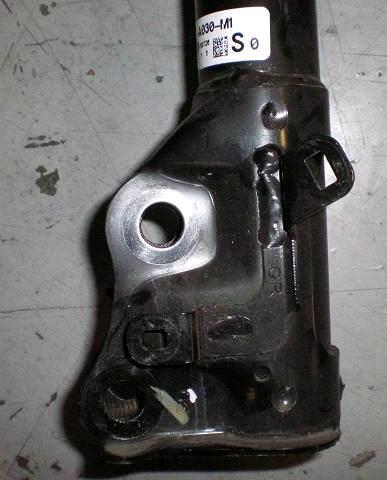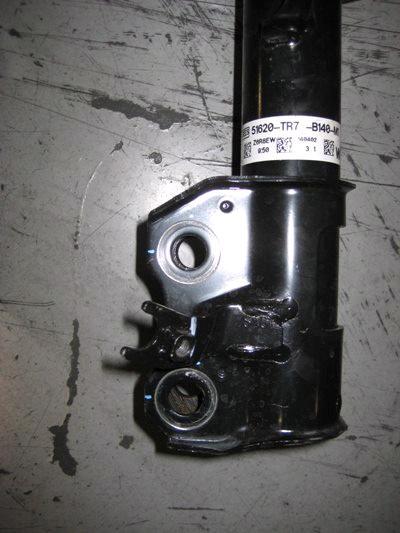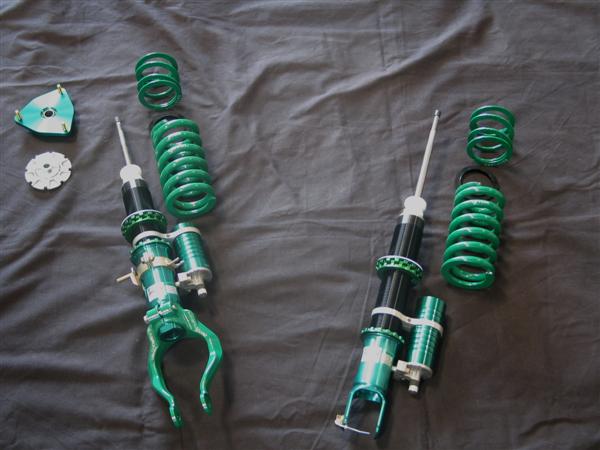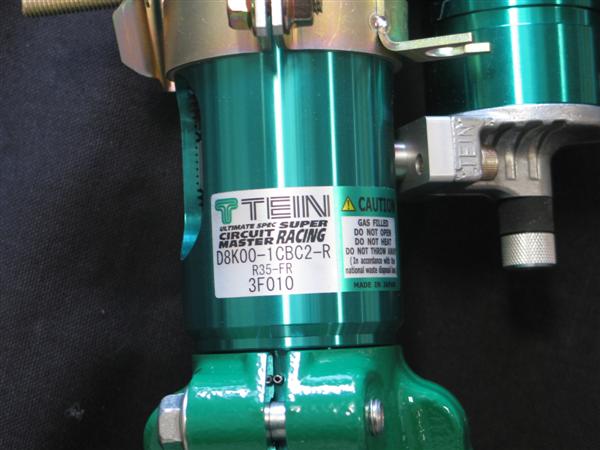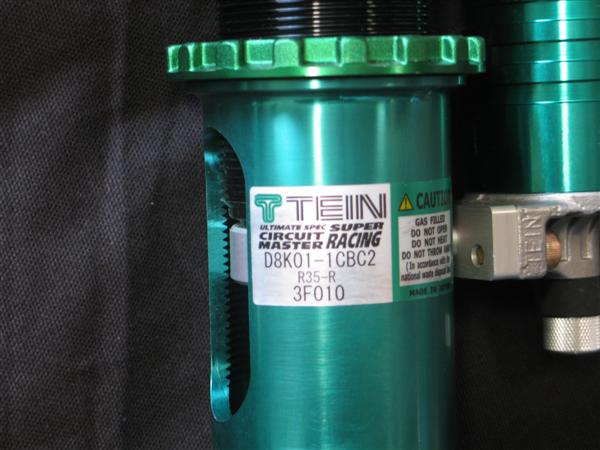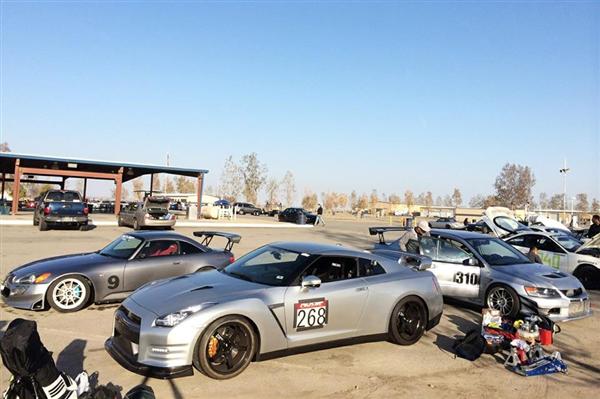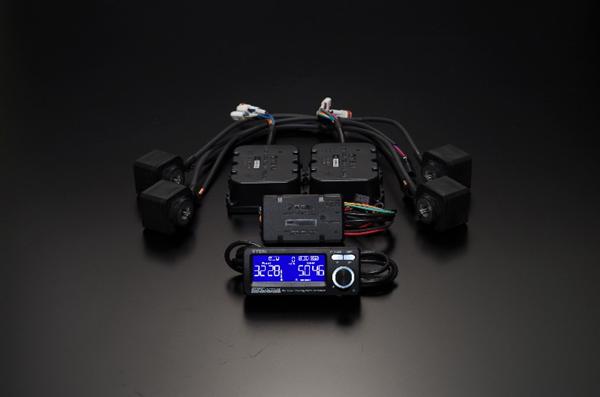This has been a long time coming. We’ve actually had 3-way damping (Rebound, Low-Speed Compression, & High-Speed Compression) technology for a long while now, made for our N1 suspension. But, it is very expensive and mainly reserved for race teams only. We also developed one for our Gr.N and 4×4 dampers, which are much more robust units, but these offered a wider range of tuning possibilities due to rally suspension needing the highest available tunability because of the higher piston speed range these dampers have. As you can imagine, this was an even more expensive unit.
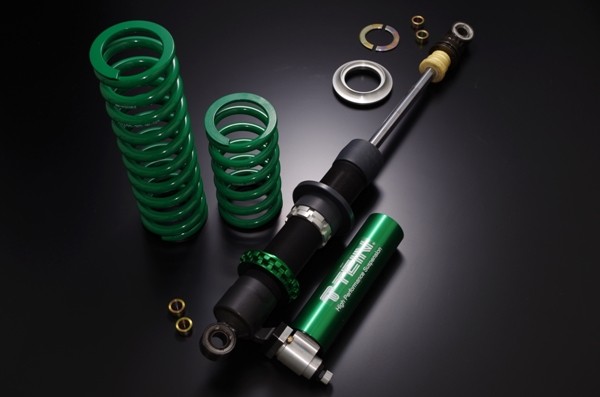
Here’s a 4×4 Damper with 3-Way Unit installed on the External Reservoir.
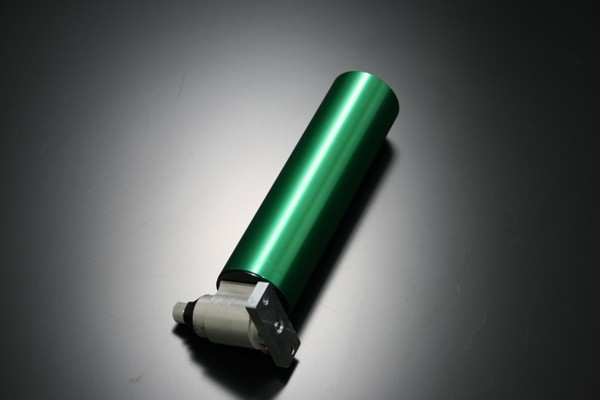
As you can see, the 3-Way Unit for our 4×4 Damper doesn’t look much different than the newer units we’ve just come out with. That’s because the new ones are nearly a direct derivative of the 4×4 Damper (and Gr.N) units, just much more affordable in terms of manufacturing cost. The technology, which is proprietary, is just about the same.
Now, we’ve developed a much more affordable (in comparison to the original units), less complex, and effective unit based around the Gr.N 3-way unit’s design that we will start doing testing on very soon!
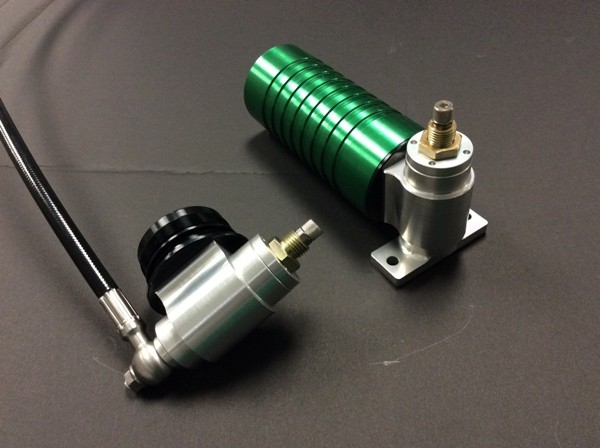
The 3-Way Unit (Silver) is made as an adaptive system to our Super Racing coilovers. We replace the original ADJ System, as we refer to it (or Compression Adjuster, if it’s easier) with our 3-Way Adjuster Unit. As you can see, we have two different designs depending on how we mount the external reservoir.
What’s so special about 3-Way damping? Well, this specifically affects the compression side of damping. The thing is, while we can easily tune a damper for what we believe to be the most ideal conditions, race cars see various changes in track surfaces that can affect their elapsed time. Race tracks can be a mix of glass-smooth surfaces followed by huge bumps or kerbs, and even expansion joints, or just rough surface transitions. This can unsettle a car quickly, and the less time on the throttle means seconds being added to the elapsed time.
Such surface transitions require a damper that responds to such instances by allowing the compression side to actually soften for a brief moment. If you think of it from your car’s tires’ aspect, an increase in damping force as piston speed increases can cause the tire to momentarily lose contact with the surface (hop). That means a loss in traction. Remember, a car maintains its best mechanical grip when all four tires maintain contact with the surface it rolls on, and that means the driver can keep on the throttle for a longer duration.
Many of you may have heard of “Digressive Valving” for dampers. What this means is that as damper piston speeds increase, the damping force has actually decreased (instead of increasing exponentially as this speed increases). Many dampers, by design, are technically digressive valving. However, the drop off in damping force may not be as much as some manufacturers are expecting. So, some may use some type of blow-off valve that opens extra ports as piston speeds increase instead of just relying on the shim stack assembly, and this creates a greater drop off in damping force as piston speed exceeds a certain level.
Low-speed, both in terms of vehicle speed and damping speed, is easier to control. There is very little resistance to the tires contact with the road surface. It is when vehicle speed or surface changes occur that mechanical grip becomes more of a concern.
To correct for such instances, race dampers have some form of high-speed damping control, and mainly on the compression side. This is where our new 3-way unit comes into play.
As mentioned before, we have already had versions of this, the most popular being on our Gr.N coilovers for rally. Think about the road surfaces that rally racing has- loose gravel, gaps, jumps. These are all things that can make a tire lose contact with the surface quickly. We’ve done really well with our 2-way adjustable Super Racing dampers, but as race cars get faster and faster, their suspension needs to cope with potential road surface transitions and react at a much quicker rate. We’ve been trying to get a 3-way version of the Super Racing dampers out to market, but it was just too expensive with our previous technology. So, we now hope to have something a bit more reasonable! However, we’ll only offer this as an upgrade under our overhaul service.
Also, if you’ve ever heard people talking about unsprung mass (weight not being supported by the suspension under gravity) as a concern, it is because heavy unsprung mass (tires, wheels, brakes, knuckle/hub, etc) can cause great upward deflection momentum, and that means a tire can lose contact with the road surface for much longer (in terms of fractions of a second). While we can try to combat that upward momentum by increasing spring rate (to try and speed up rebound force), it doesn’t benefit the compression side. In fact, this only exacerbates the problem with lost traction. What we want is a damper that has the ability to control a wider range of compression speeds. This will help keep the tires in traction, or as some people say- keeps the car planted.
For now we have only developed them as optional units for our Super Racing setup, and we’ll have one of our closest sponsored parties using them for this year’s Global Time Attack Super Lap Battle finale for the 2015 season. The racetrack, Buttonwillow Raceway Park, is a great test for us as the road surface has all sorts of transitions and undulations that can really hamper a vehicle’s ability to be fast.
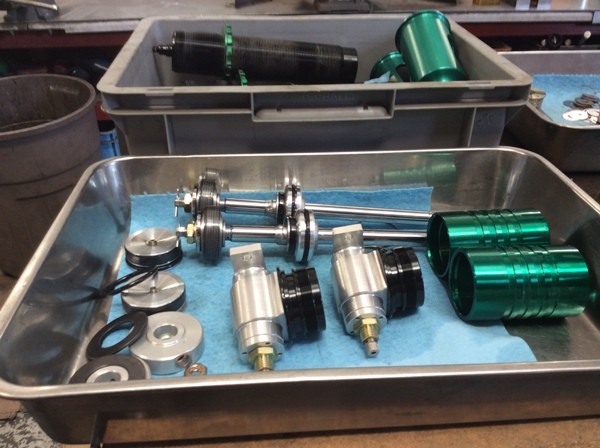
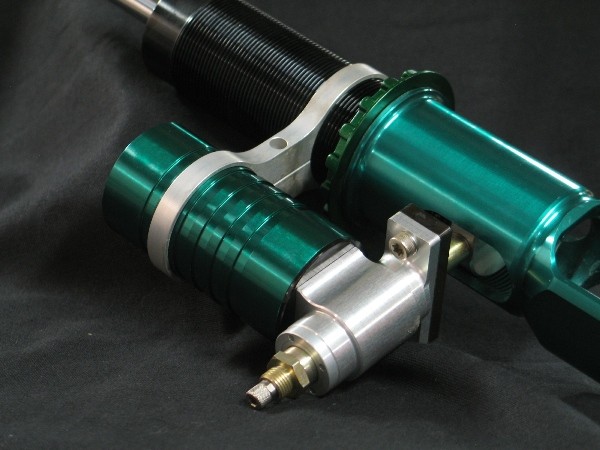
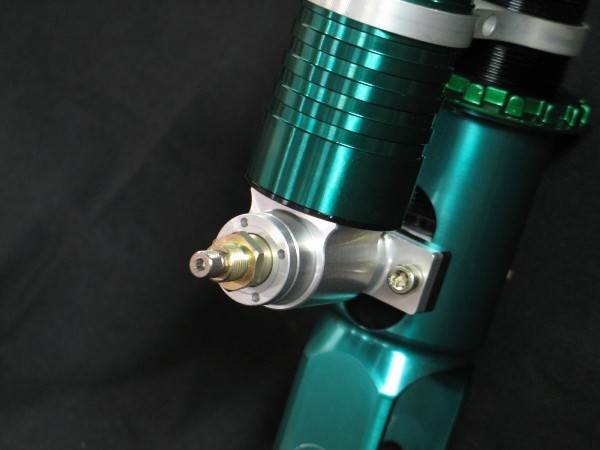
This 3-Way Unit is specifically for our “SA” type dampers, or dampers for double wishbone or multilink suspension. Basically it is directly mounted to the damper body.
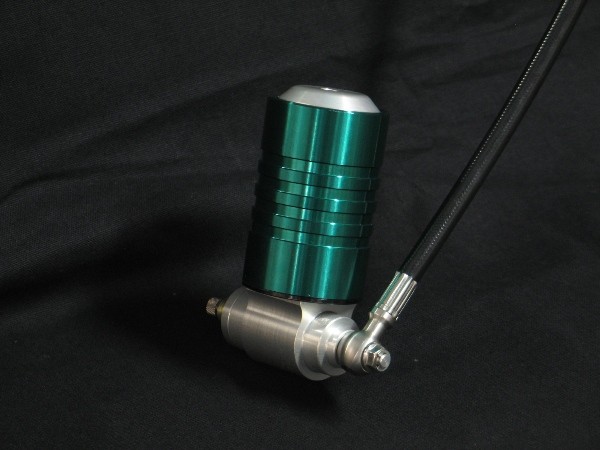
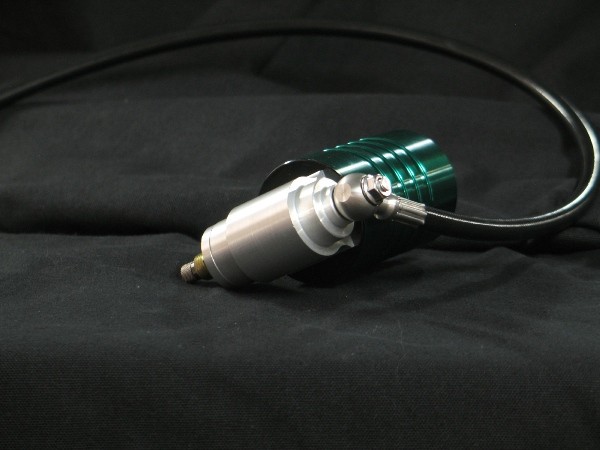
For our Strut Type suspension (Inverted monotube design), or where room doesn’t allow us to mount the external reservoir and 3-Way Unit directly to the damper body, we can do a remote setup, this give us some flexibility in mounting the external reservoir/3-Way Unit to the vehicle. As much as possible, though, we try to keep the remote hose as short as possible.
Stay tuned for more updates on our 3-Way testing.
